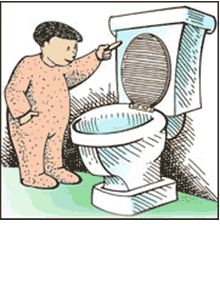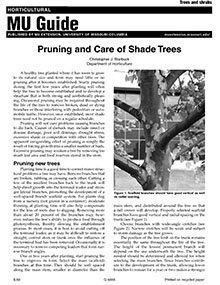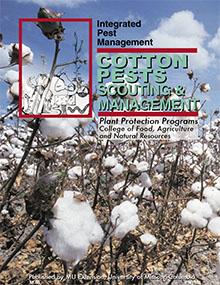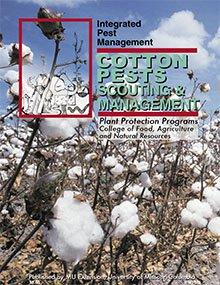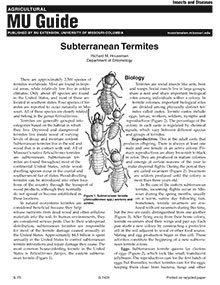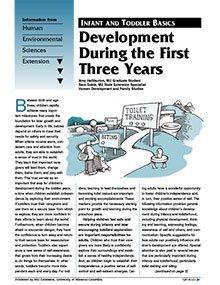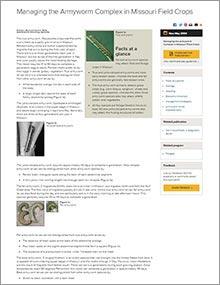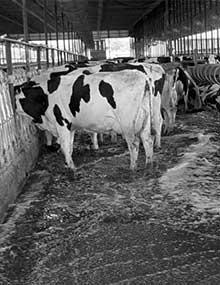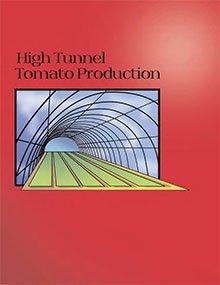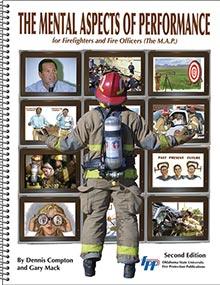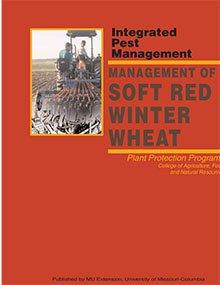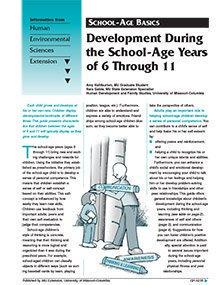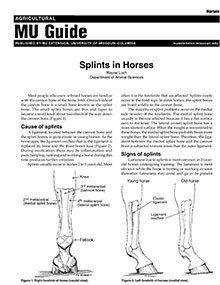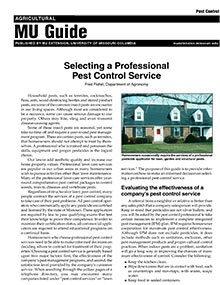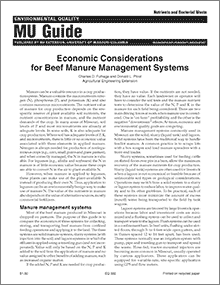Steps in Fertilizing Garden Soil: Vegetables and Annual Flowers
Revised
Learn how to ensure your garden soil has the nutrients plants need. Start with a soil test, fertilize according to the report, and follow the other steps outlined in this guide to enhance your soil’s fertility.
Missouri State and Local Spending: A Fifty-State Comparison for 2002
New
Editor's note
The following abstract describes a publication that is only available as a downloadable PDF.
Soil Sampling Pastures
New
Collecting a representative soil sample is an important step in developing a nutrient plan for your farm. The goals of your soil sampling plan should be to
Toilet Training
Reviewed
Cotton Pests: Scouting and Management - Page 2
New
Insect management
Figure 3
Pruning and Care of Shade Trees
Reviewed
Most established shade trees do not need to be pruned regularly. But yearly pruning during the first few years after planting can help a tree become established and develop a strong, attractive structure. Learn when and how to prune and problems you might
Cotton Pests: Scouting and Management - Page 3
New
Beneficial insects
Honey bees and other insects help pollinate cotton. Cotton is primarily a self-pollinator, but it is partially pollinated by insects.
Cotton Pests: Scouting and Management
New
Cotton pest management scouting report (PDF)
Cotton Pests: Scouting and Management - Page 4
New
Cotton diseases
Diseases, including nematodes, reduced cotton production in Missouri an estimated 8.7 million pounds in 2001, 19.6 million pounds in 2002, and 39.7 million pounds in 2003. The value of the loss in 2003 was $17.1 million. Clearly cotton diseases are a serious detriment to the cotton farmer's income and the economy of Missouri.
Subterranean Termites
Revised
Infant and Toddler Basics: Development During the First Three Years
Reviewed
Infants and toddlers grow up quickly. Visit our site for our Infant and Toddler Basics: Development During the First Three Years resource.
Managing the Armyworm Complex in Missouri Field Crops
New
Figure 1a
True armyworm.
High Tunnel Tomato Production
New
Editor's note
The following abstract describes a publication that is only available as a downloadable PDF.
The Mental Aspects of Performance for Firefighters and Fire Officers (The M.A.P.), Second Edition Manual
New $56
This book helps firefighters and fire officers learn about specific keys to successful performance, goal setting, situation-evaluation training, mental discipline, sensory-enhancement education, and more. It is full of information, skills, exercises, and tools designed to help develop and maintain the psychological and emotional muscles required to sustain long and successful careers.
Management of Soft Red Winter Wheat
New
Editor's note
The following abstract describes a publication that is only available as downloadable PDFs by section.
Occasional Biting Pests
Revised
There are several species of insects and mites that bite human occasionally. Some are encountered indoors while others are found outdoors. Some are specific pests of humans, with no other hosts, while others attack humans incidentally. These insects and mites vary in their biology, behavior and methods of control.
Splints in Horses
Revised
Most people who own or breed horses are familiar with the cannon bone of the horse limb. On each side of the cannon bone is a small bone known as the splint bone. The small splint bones are thin and taper to become a small knob about two-thirds of the way down the cannon bone (Figure 1).
Economic Considerations for Beef Manure Management Systems, Page 2
New
Example 1 shows how to determine the value of manure nutrients used by 150 bushels per acre corn (based on soil test).
Economic Considerations for Beef Manure Management Systems
New
Manure can be a valuable resource in a crop production system. Most of the beef manure produced in Missouri is dropped on pastures. The purpose of this guide is to compare the economics of three systems for collecting, storing, and transporting beef manure from confined feeding operations and applying it to the land. The three systems are solid manure systems, slurry systems (with injection into the soil) and lagoon systems in which the effluent is applied using a traveling gun (and not incorporated).



